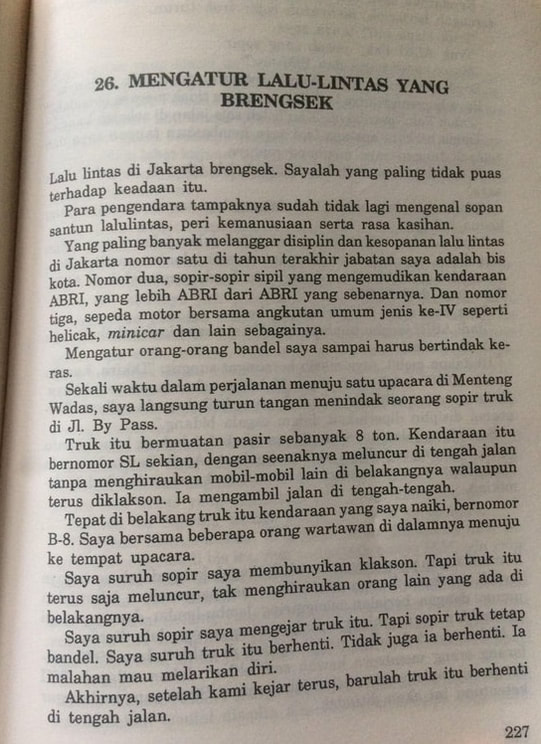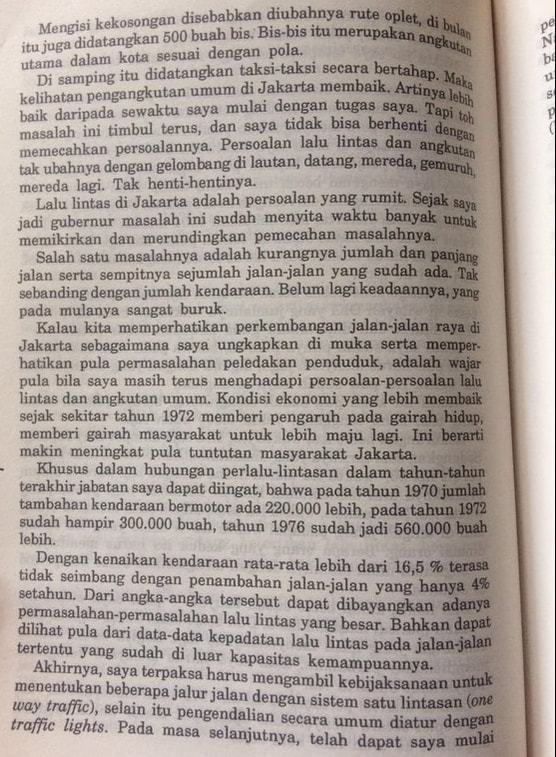Sense of Greatness no. 1 – Directing Undirectly
Soekarno’s speech for the Jakarta’s anniversary in 1962, right before the 4th Asian Games, mentioned the city’s development as a metropolitan city whose magnificent skyscrapers and splendors were to be experienced by its citizens. Jakarta is now a megapolis with undeniable magnificence, but what about its citizens’ ability to adapt with the real urban life?
Jakarta is a city with the second most motorcycle riders in the world with a road length of not less than 6.8 million km. It offers particular challenges who experience it daily by riding their motorcycles.
In Jakarta, traffic signs are often violated. Everyday driving strategies are urgencies. One violation is followed by dozens of drivers afterwards. Happening not only once but every day occurences, these violations render wayfinding processes demand particular tricks and know-hows. If traffic signs are proven to be insufficient to guide drivers, maybe popular dialogues, guidance, or even commandments could offer directions and paths to be followed.
Jakarta is a city with the second most motorcycle riders in the world with a road length of not less than 6.8 million km. It offers particular challenges who experience it daily by riding their motorcycles.
In Jakarta, traffic signs are often violated. Everyday driving strategies are urgencies. One violation is followed by dozens of drivers afterwards. Happening not only once but every day occurences, these violations render wayfinding processes demand particular tricks and know-hows. If traffic signs are proven to be insufficient to guide drivers, maybe popular dialogues, guidance, or even commandments could offer directions and paths to be followed.
Biography
Angga Cipta (born in 1988 in Jakarta).Acip graduate from visual art pedagogic, State Univesity of Jakarta. Acip creates illustrations, found object, mixed media artworks, and installations. By taking daily life as subject matter while commenting on the everyday aesthetic of middle class values, he focuses on the idea of ‘public space’ and more specifically on spaces where anyone can do anything at any given moment: the non-private space, the non-privately owned space, space that is economically uninteresting. His works demonstrate how life extends beyond its own subjective limits and often tells a story about the effects of global cultural interaction over the latter half of the twentieth century. It challenges the binaries we continually reconstruct between Self and Other, between our own ‘cannibal’ and ‘civilized’ selves. In a search for new methods to ‘read the city’, he often creates work using creative game tactics, but these are never permissive. Play is a serious matter: during the game, different rules apply than in everyday life and even everyday objects undergo transubstantiation. His works are characterised by the use of everyday objects in an atmosphere of middleclass mentality in which recognition plays an important role.



